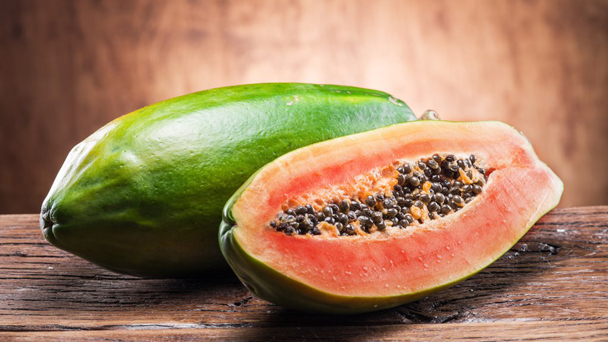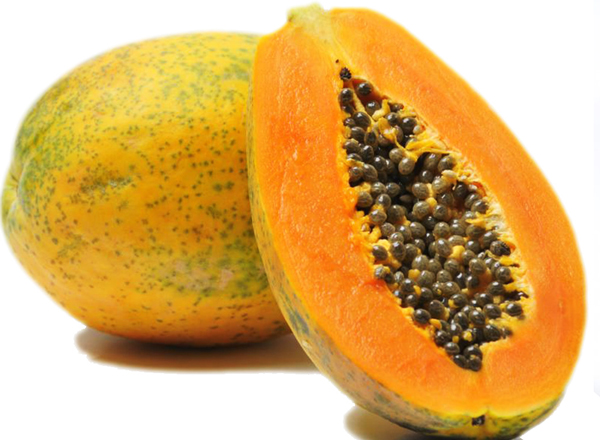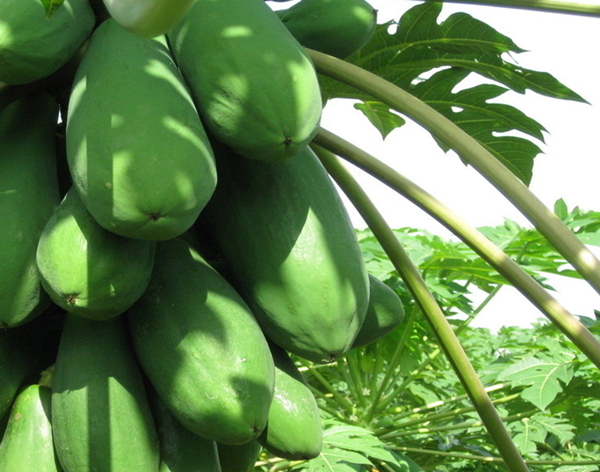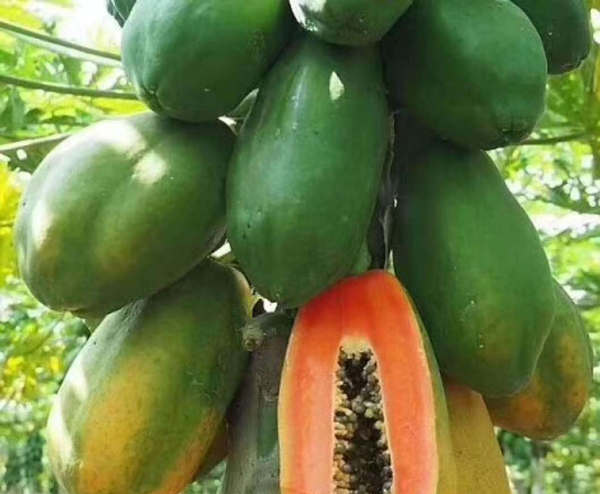Papaya: Grow & Care for Papaya Trees
Written by Iris
Aug 06 2021

How to Choose and Prepare a Planting Site
In general, papaya trees should be planted in full sun for best growth and fruit production. Select a part of the landscape away from other trees, buildings and structures, and power lines. Select the warmest area of the landscape that does not flood (or remain wet) after typical summer rainfall.How to Grow Papaya (Carica papaya)
Steps for Papaya (Carica papaya) Propagation with Seeds
Most papayas are grown from seed because of the impracticality of vegetative propagation methods in nursery production. Seeds are extracted from fully ripe fruit, washed to remove gelatinous material and planted several per pot of soil or potting medium. Seed can be obtained from papaya fruit purchased at the local supermarket. If the fruit is from Hawaii, the chances are good that the resulting seedlings will be mostly bisexual.Germination is accomplished in approximately two weeks under full sunlight. The plants can be set out as soon as they are large enough (about 1 foot tall) to survive with minimal care. The pots of plants should be spaced 8 to 10 feet apart.
Papaya seedlings should begin flowering in five to six months, at which time they can be thinned to a single female or bisexual plant at each site. In the absence of bisexual plants, one male plant is needed for every eight to ten females.
Steps for Papaya (Carica papaya) Propagation with Grafting
Pawpaws can generally be grafted with success using multiple grafting and budding techniques. Take scions in the winter from dormant trees that are 2 to 3 years old and graft them onto other pawpaw rootstocks.Steps for Papaya (Carica papaya) Propagation with Cuttings
Propagating pawpaw trees through cuttings is possible, but it does not have a particularly high success rate. If you want to attempt it, take softwood cuttings of 6 to 8 inches (15-20 cm.) in late summer. Dip the cuttings in rooting hormone and sink them in rich, moist growing medium. It’s best to take several cuttings, as the success rate of rooting is usually very low.
How to Care for Papaya (Carica papaya)
Light
Full sun. Give your papaya tree as much direct sunlight as you can year-round. Moving it outdoors for the summer will help the fruits to ripen. Turn the plant a quarter turn every week because it will tend to grow toward the light source.Soil
Papaya plants grow and fruit well in many well drained soil types. Plants will do well with care in sands, loams, and rocky soils with a pH of 4.5 to 8.0.Water
Watering is the most critical aspect in raising papayas. The plants should be kept on to the dry side to avoid root rot, but also need enough water to support their large leaves. In winter the plant prefers to remain as dry as possible. A plant that has been injured by frost is particularly susceptible to root rot. In the summer they can handle all the water you can give them provided the soil drains well.Temperature and Humidity
Papaya thrives best under warm, humid conditions. It is generally intolerant of strong winds and cold weather. Temperatures just below freezing can kill small plants to the ground–larger plants that are not killed outright will normally produce suckers to regenerate the plant and bear fruit within a year. Limited commercial plantings in the lower Rio Grande Valley rarely survive more than a few years because of freezing temperatures.Fertilizer
The fast-growing papaya requires regular applications of nitrogen fertilizers but the exact rates have not been established. Feed monthly and adjust according to the plant's response. They can take fairly hot organic fertilizing such as chicken manure if used with deep irrigation after warm weather has started. Phosphorus deficiency casuses dark green foliage with a reddish-purple discoloration of leaf veins and stalks.
Pruning
Papaya plants are not pruned because their main growing point is terminal, and branched trees may not produce as well. However, as papaya plants mature and/or if they are exposed to environmental conditions that inhibit growth or if the main growing point is damage or killed, side shoots may grow. Selecting 1 or 2 of the most vigorous shoots and removing the others will facilitate growth and fruiting of the remaining shoots. Tying these side shoots to a stake will reduce the chance they may break off due to a heavy fruit load or high winds. Removal of dead leaves is a good practice and results in less scarring of the fruit from the base of the leaf petiole. It also reduces disease and insect problems.
Pests and Diseases
Root rots can cause rapid death of papaya plants. The only solution is to set new plants in a better location with better drainage or use raised beds. Watering must be done with care.Virus diseases are quite common and uncontrollable. They normally cause vein-clearing and yellow mottling of the leaves. Other symptoms include distortion of leaf growth accompanied by stunting, poor set and the presence of various greasy-appearing or yellow rings on leaves and fruit. Infected plants should be removed and destroyed.
Anthracnose appears on the fruit as irregular, water-soaked spots that later enlarge, darken and become sunken in the rind. Copper sprays have been of limited effect in severe situations, but would not be expected to be of much use under normal conditions in Texas.
Common whitefly is about the only insect pest which has affected papaya in Texas, leading to sooty mold on the foliage and fruit. Sweetpotato whitefly also is reported to favor papaya. The safest control is through spraying with a soapy water solution.
Tip burn and marginal necrosis (browning) of the leaves is caused by saline soil and water conditions common in much of Texas. Symptoms are usually more severe on older leaves and during the summer.

Varieties of Papaya (Carica papaya)
‘Betty’: excellent flavor; very tender flesh; quick to bear fruit.‘Bluestem’: rich flavor; thick flesh; recommend for Florida
‘Graham’: excellent flavor; the flesh is firm and juicy; small to medium size fruit; recommended for Texas.
‘Kamiya’: very sweet; juicy; small to medium-sized fruit; dwarf tree.
‘Mexican Red’: not as sweet as Hawaiian types; rose-colored flesh; medium to very large fruit.
‘Mexican Yellow’: very sweet and flavorful; yellow flesh; medium to large fruit, can grow up to 10 pounds.
‘Solo’: very sweet; reddish-orange flesh; bisexual flowers.
‘Sunrise’ (‘Sunrise Solo’): high sugar content; reddish-orange flesh; plant matures in 9 months to about 3 feet tall.
‘Sunset’ (‘Sunset Solo’): very sweet; small to medium-sized, pear-shaped fruit; orange-red skin and flesh; dwarf tree.
‘Vista Solo’: sweet in hot weather; yellow skin, orange-yellow flesh; self-fertile.
‘Waimanalo’ (‘Waimanalo Solo, X-77’): very good flavor; round fruit; orange-yellow flesh.

Papaya (Carica papaya) FAQ
When do papayas fruit and how much?
Papayas fruit all year round as long as the weather is warm enough. Keep them happy and they will keep fruiting. If the temperatures drop too much they stop flowering. They will flower again as it warms up. Young papayas are the most productive. The older a papaya plant gets, the weaker it becomes. It will produce less and smaller fruit and it may get problems with diseases. Also, because the plants keep growing taller it gets harder to reach the fruit. I think it's best to just keep planting more. Put in another patch every few months. That way you always have some healthy and productive plants around and you don't need a ladder to pick the fruit.How long do papayas live?
That can vary greatly, but most papaya plants are short lived. As they get older they get more susceptible to all kinds of diseases. Most of mine die some time in their second or third year. We get big storms here and usually my papayas just blow over once they get too tall. But I also have some trees that seem indestructible. Rather than blowing over they snap off and grow multiple new trunks. I once saw a photo of a forty year old papaya.Latest Updated
- Benefits of Bugleweed - 7 Science-backed Health Benefits
- Bugleweed Dangers & Side Effects - Is It Poisonous?
- How to Plant Evergreen Trees - What You Should Know
- When to Plant Evergreens - Grow Guide for Evergreen Trees
- 12 Wonderful Evergreen Shrubs for Your Garden
- 12 Popular Evergreen Plants with Pictures for Beginners
- When And How To Prune A Lilac Bush Like a Pro
- How to Grow & Care for Lilac Vine (Hardenbergia Violacea)
- Japanese Lilac Tree (Syringa Reticulata) Care & Propagation Guide
- Shumard Oak Pros and Cons - What to Know
Popular Articles
- Winter maintenance of Antirrhinum Majus
- How to Grow Terminalia Mantaly Tree
- How to Grow and Care for Crossostephium Chinense
- How to grow Antirrhinum Majus in spring
- Peristeria Elata (Dove Orchid) Profile: Info & Care Guide
- Underwatered Snake Plant (Sansevieria Trifasciata) - Signs And How To Fix
- How to Care for Brazilian Jasmine Plant (Mandevilla Sanderi)
- How to Grow & Care for Graptopetalum Purple Delight in Summer
- Rosa Chinensis (China Rose): Plant Growing & Care Tips
- How to Care for Baby Sun Rose (Aptenia Cordifolia)